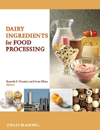Dietary acrylamide is of concern for consumers, food industry and regulators worldwide. But recently, a panel organized by the International Food Information Council (IFIC) for a press webinar concluded that the chemical agent has not been shown to pose any health risks.
Acrylamide is an odorless, colorless chemical agent used to manufacture certain chemicals, plastics and dyes, and is considered a mutagen and possibly a human carcinogen, based mainly on animal studies, studies in laboratory animals, according to the National Cancer Institute. A Swedish study (Journal of Agriculture and Food Chemistry, 2002; 50(17):4,998–5,006) was the first to report that frying or baking at high temperatures (at more than 248 degrees F) for prolonged periods of time could create acrylamide in many types of food, particularly starchy foods, such as French fries, potato chips, crackers, certain types of fried or baked bread, and some cereals. Heating asparagine, a naturally occurring amino acid in the presence of certain sugars, can form acrylamide.
Recently, a joint committee of the World Health Organization released a global risk assessment on acrylamide in foods that offers no new evidence of any significant health risks associated with dietary acrylamide exposure. What’s more, a survey of food by the European Food Safety Authority (EFSA) indicated a drop in acrylamide levels in foods because of efforts to encourage food makers to voluntarily reduce acrylamide levels in processed foods.
Webinar participant and environmental toxicologist James R. Coughlin, Ph.D., president and founder of Coughlin & Associates, Aliso Viejo, Calif., said that laboratory tests on rodents in the 1980s and 1990s showed increased cancer risks among those given doses of acrylamide thousands of times greater than levels consumed by humans. Coughlin pointed out that numerous studies of low levels of dietary acrylamide in humans haven’t drawn such conclusions. Coughlin said approximately 40 human epidemiological studies have reviewed levels in food, none of which conclusively associated acrylamide with any increased heath risks.
“Regulators and researchers that have been involved from the get-go understand more research needs to be done to understand if there is a health risk to humans," he said. "We have to struggle with and are grappling with the relevance of the high dose testing in animals and whether there is relevance in the human diet."
Another speaker in the panel, Julie Jones, Ph.D., a food science and nutrition professor emeritus at the University of Minnesota, said there are thousands of different food products that contain acrylamide, and no single food contributes a majority of acrylamide to the average diet. She noted that while acrylamide reduction efforts by the food industry have decreased intake, consumers can help mitigate exposure.
"We know that if people would actually eat according to MyPlate and dietary guidelines, they would reduce the risk of many kinds of cancer, diabetes and heart disease," Jones said. "The trouble is only about 8% of the population eats according to the guidelines. That is the real risk in our diet. We also need a variety of foods that are shown in the MyPlate and a variety of cooking methods."
Source: www.foodproductdesign.com
Recommended Articles
Related Articles
Related Products
See More ProductsSee More ProductsRelated Directories
×
Keep the info flowing with our eNewsletters!
Get the latest industry updates tailored your way.
JOIN TODAY!Copyright ©2024. All Rights Reserved BNP Media.
Design, CMS, Hosting & Web Development :: ePublishing









